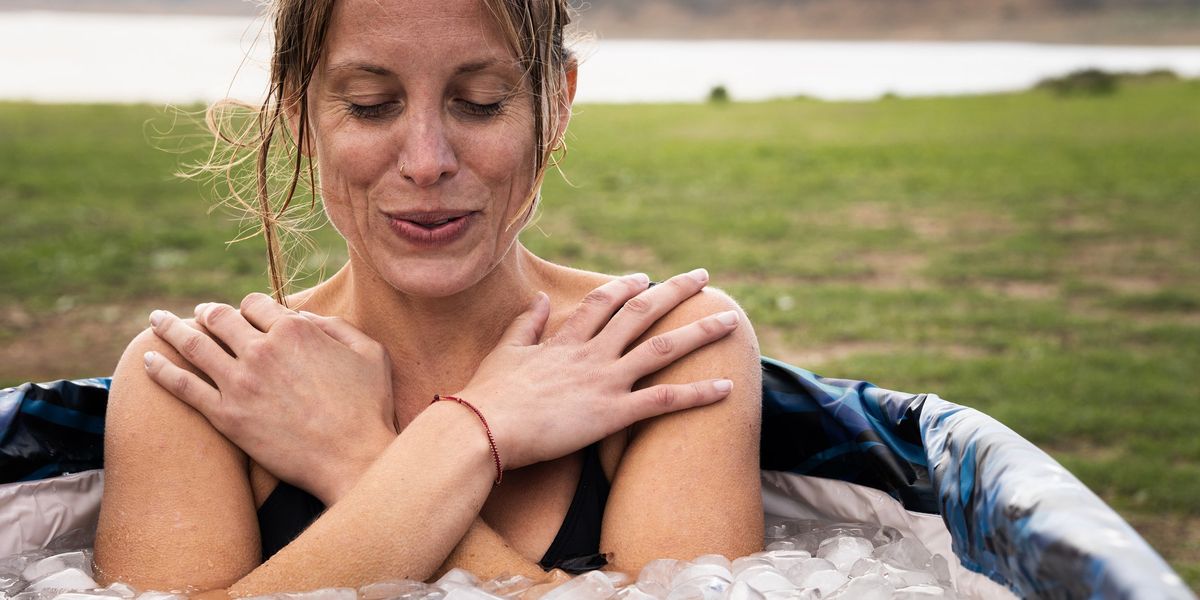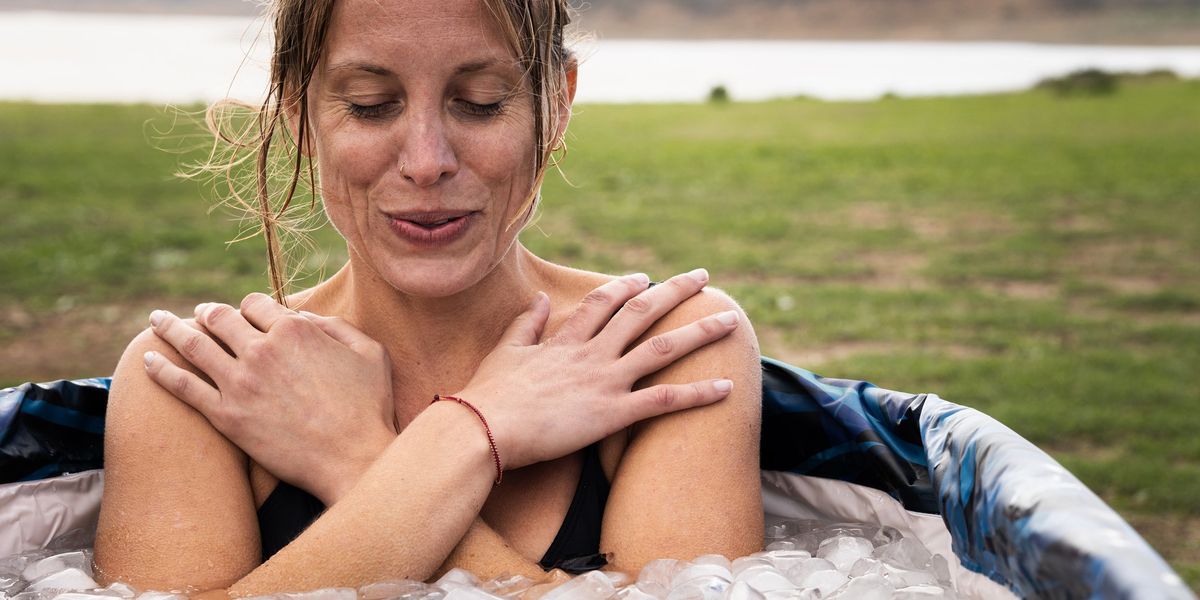



I’m from Michigan so I know what cold is. I now live in Las Vegas — because I know what cold is.
All those years digging my car out of the snow has given me freeze-phobia — I try to avoid anything that’s even associated with the cold. I drink hot tea. I prefer my true crime cases solved. I don’t know where Iceland is on a map. And I’m a fan of Netflix — you can keep the chill.
It’s hard for me to wrap my brain around doing anything arctic on purpose. But cold plunges have become increasingly popular in recent years, especially on social media. The hashtag #coldplunge has more than billion views on TikTok, and “cold plunge women” has more than 144 million posts.
Read: The Latest Fitness TikTok Trends: Heart or Hype? >>
A cold plunge, also called cold-water immersion, is when you submerge yourself in frigid water (around 50 degrees) in an effort to achieve physical and/or mental health benefits. Think of a bathtub filled with cold water and ice cubes or a chilled body of water like a lake.
Cold plunging isn’t new — the icy pastime dates back to ancient Greece. And you’ve probably seen athletes and entertainers like Lady Gaga posting photos of ice baths after a taxing workout.
Supporters of the plunge say it can help improve health conditions such as inflammation and chronic pain, as well as promote overall well-being.
Research on the benefits of cold plunging is ongoing, and most of the studies out there right now involve small groups of people. But there is some science to note behind the potential health perks of cold plunging.
Possible benefits may include:
It takes anywhere between three and five minutes for the cold to penetrate past the skin, so most people stay in the water between five and 10 minutes.
Beginners typically start at 30 seconds or a minute and work their way up.
The time spent in the water also varies depending on the temperature and your comfort level, but staying in for more than 10 minutes increases the risk for hypothermia.
Anyone with a chronic health condition should talk to a healthcare provider before trying cold-water immersion.
A cold plunge can cause increased breathing, heart rate and blood pressure. This can put stress on the heart and may cause abnormal heartbeats, so people with heart disease or a heart condition should avoid cold plunging.
You may also want to skip it if you’re living with:
Other risks of cold plunging include drowning and hypothermia.
Cold-water immersion isn’t for everyone. And without significant research, it’s hard to know if the potential health benefits are worth the freeze. Talk to your healthcare provider before jumping in.
This article was originally published on healthywomen.org.
ShoppingGenius home upgrades that look ultra-luxe but are secretly cheap AF.by Candace Nagy8 minutes agoAmazonWe… Read More
The finance industry remains one of the most stable and lucrative career fields, with a… Read More
Cosmic beings, the week kicks off with a cosmic double feature, and we’ll definitely feel… Read More
ShoppingGet ready for an instant boost of confidence.by Laura G.32 minutes agoWe may receive a… Read More
Small businesses often operate on tight budgets, making marketing a challenge. However, promoting a business… Read More
In a perfect world, there would be an abundance of easily accessible resources to help… Read More